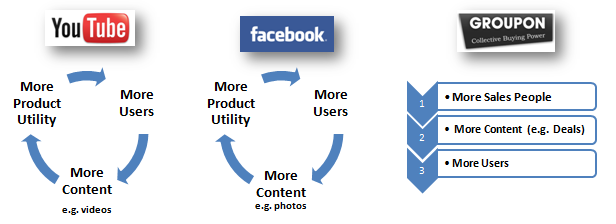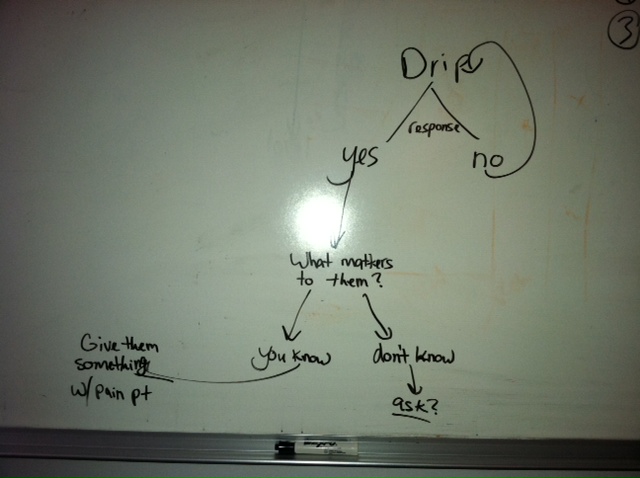Scaling an Internet Business
I built the chart below to illustrate a few points about internet businesses.

- The chart shows the virtuous cycle that comes from sites with user generated content. YouTube's and Facebook's products are their users. Their users generate videos and photos that make the site more valuable. More value, more users, more value, more users.
- This cycle doesn't exist as cleanly for deal sites. Their product is deals that come from salespeople. If they want more deals, they need more salespeople. That's expensive (they have 4,000 of them). Certainly, more users make their salespeoples' pitch better, but that cycle doesn't happen neatly.
- Groupon has a a huge advantage when it comes to conversions. People come to Groupon to shop; their deals (i.e. ads) are their product. Conversely, people do not come to Youtube and Facebook to shop. Their ads are a distraction. Because Facebook and Youtube make money by distracting people from what they want to do on their sites, Groupon arguably has a more sustainable model.
- Because Facebook's and Youtube's products are their users and Groupon's product is their salespeople, it's interesting to think about how much incremental value their engineers are adding. Youtube and Facebook are mostly made up of engineers.
When you build a consumer internet business, don't assume that it's going to happen like it happened for YouTube and Facebook. Think through whether your value will build on itself or if you need to buld it incrementally, the old fashioned way. It's also crtical to think through where your scale is going to come from: users, salespeople, or engineers. The answer isn't always clear.
